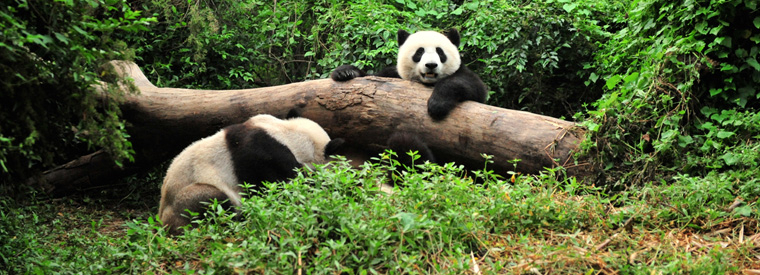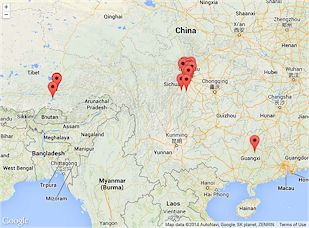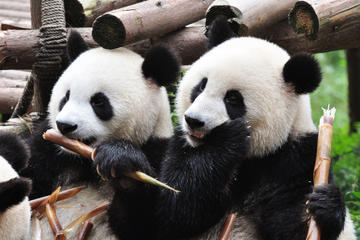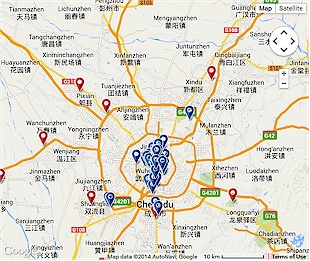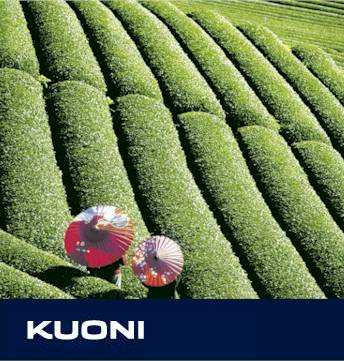« CHINA • DISCOVER CHINA • Chengdu
Discover magical Chengdu

More than simply providing a natural setting for the giant pandas, the Chengdu Research Base of Giant Panda Breeding also serves as the world’s largest and most successful giant panda breeding center. Here visitors can learn about the myriad difficulties which go into breeding what is seemingly everyone’s favorite species of bear.
• Destination Chengdu & Surrounds
A | B | C | D | E | F | G | H | I | J | K | L | M | N | O | P | Q | R | S | T | U | V | W | X | Y | Z
» Barkhor Street

Like a treasure trove or something out of Aladdin’s cave, Barkhor Street is an ancient road that circles the square that houses Jokhang Temple. Most significant as a thoroughfare for pilgrims on their way to the temple, Barkhor Street is also home to the Tromzikhang market, host to a wide variety of vendors selling everything from prayer wheels to yak butter to tea kettles. According to local history, when Songtsen Gampo built Jokhang Temple, its grand scale immediately began to attract millions of pilgrims from the area …
» Chengdu Culture Park
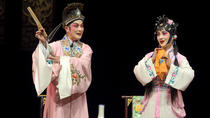
The Chengdu Culture Park, a downtown green space, specializes in displaying Chinese culture. Located next to Qingyang Palace, there are a variety of special events that take place at the park; it’s also a popular place to watch the Sichuan Opera, a theater form unique to China. Some of the special events include the Lantern Festival carnival, a flower festival, art displays and photography displays. Also in the area is the old Taoist Qingyang Temple, which dates from the Tang period (618-907) …
» Chengdu Research Base of Giant Panda Breeding
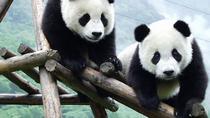
There are few images more iconic to southwestern China than that of the giant panda. Unfortunately, despite its status as a Chinese national treasure, the giant panda population has been whittled down to just 1,000 pandas due to mass human development over the last century. As a response to this ecological crisis the Chengdu Research Base of Giant Panda Breeding was opened in 1987 and began caring for six pandas rescued from the wild …
» Dujiangyan Irrigation System
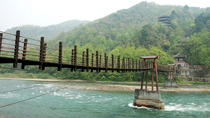
Despite being constructed in 256 BC, the Dujiangyan Irrigation System continues to serve residents of the fertile Chengdu Plain. A marvel of ancient engineering, the irrigation system was built in response to destructive springtime flood waters. It was commissioned by Governor Li Bing who began work on the project to divide the river into more manageable streams so as to not breach the riverbanks. Once separated, the diverted water was to be funneled …
» Emei Shan
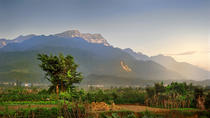
At 3,117 meters (10,226 feet) tall, Mount Emei is the highest of China’s four sacred mountains of Buddhism. Buddhist monks have made pilgrimages to the temples and monasteries of Emei Shan for nearly 1,800 years. As a nod to the religious and cultural importance of Emei Shan, in 1996 UNESCO opted to name the entire mountain as one of its World Heritage sites. Though a cable car now carries most visitors to the lofty summit, those wanting to commune with the mountain …
» Huanglong National Park

Brilliant turquoise pools, quiet rivers, cascading waterfalls and mystical yellow rocks are just part of what makes Huanglong National Park, a UNESO World Heritage site, worth a visit. Travelers love wandering the scenic passes that wind through incredible blue waters and the popular cable car offers impressive views of the landscape down below. Easy walking trails stretch over calcified rock and loop through dense forest, offering an up-close look at this unique and fragile ecosystem …
» Huanglongxi
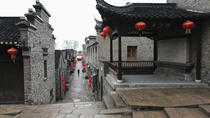
An ancient town located about 18.6 miles (30 km) southeast from Chengdu, Huanglongxi is named for the Huanglong River, which flows through it. The town consists of seven well-preserved, ancient streets, which were built during the Ming and Qing dynasties, and also includes three temples: Gulong, Zhenjiang and Chaoyin. These three, along with two others in the immediate area, are what attract visitors to the site. Pay particular attention to the preserved stilt houses …
» Jinli Ancient Street

When Qin Dynasty traders started selling baldachin cloth on Jinli Street in 220 B.C. they set in motion a chain of events which would turn Jinli into the busiest commercial hub in the city of Chengdu. Known as “The First Street of the Shu Kingdom” for its commercial activity during the “Three Kingdoms Period” (221-263), the boulevard now known as Jinli Ancient Street was recently restored in 2004 in an effort to return it to its former glory …
» Jokhang Temple
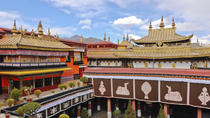
One of the most popular tourist attractions in Lhasa, Jokhang Temple is located on Barkhor Square. It is part of the UNESCO World Heritage site that consists of the historic ensemble of the Potala Palace and is a spiritual center of Lhasa. Constructed in 642 by King Songtsen Gampo, Jokhang became a famous temple after the Buddhist master Atisha taught here in the 11th century. The site consists of four levels of labyrinthine chapels dedicated to gods and bodhisattvas …
» Kuan-Zhai Lane (China’s Lane)
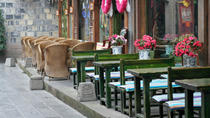
When Chinese soldiers of the Qing Dynasty returned from war with Tibet in 1718, many of the soldiers and their families based themselves around Kuan-Zhai Lane in the Sichuan city of Chengdu. Though only 3 of the original 42 lanes remain from the period of military housing - Kuan, Zhai, and Jing - these three lanes collectively comprise an area of Chengdu now known to travelers as China’s Lane. Although the name literally translates to “Wide-Narrow” Lane, both Kuan and Zhai lanes exist as narrow alleyways …
» Leshan Grand Buddha

The 233-foot (71-meter) tall Grand Buddha in Leshan (also called the Leshan Giant Buddha) holds the record as both the tallest stone Buddha sculpture and one of the tallest sculptures anywhere in the world. Construction of the Buddha, carved out of the mountain, began in 713 when a Buddhist monk by the name of Hai Tong decided to carve the statue as a way to gain divine protection for local fisherman who were getting killed each year by violent river currents …
» Lhasa, Tibet
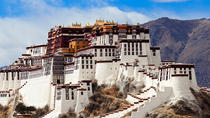
Few places in the world inspire a sense of mystery and magic quite like the Tibetan capital of Lhasa. Closed off to outside visitors for generations, it has only been within the last 50 years that Tibet’s 12,000 foot (3,657.6 meter) capital has been accessible to a handful of lucky visitors. As an area that is still very much protected from the influences of foreign tourists, nearly all travelers must obtain a Tibetan Tourism Bureau permit and be part of an organized tour group …
» Lingyun Temple

Located on Lingyun Mountain, Lingyun Temple is also referred to as the Great Buddha Temple because of its spot at the head of the Leshan Great Buddha, the largest stone Buddha in the world.On both sides of the entrance gate to the temple are four memorial monuments, with the principal building composed of the Tianwang, or Heavenly King Hall, the Precious Hall of the Great Hero and the Scripture Collection Hall, all of which neatly form a multi-tiered courtyard house …
» Luodai

Visitors flock to Luodai, an ancient town located in the Sichuan area of China, about 12.8 miles (20 kilometers) from Chengdu City. Situated at the base of Er’eshan Mountain as part of the Longquanshan Mountains, Luodai is considered the largest and best-preserved Hakka ancient town in the western part of the country. Ninety percent of Luodai’s inhabitants are Hakka, and the Hakka language is still spoken here. Built more than 1,000 years ago, Luodai has a long history …
» Mengding Mountain
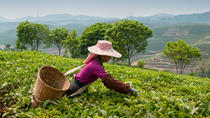
China is known for its tea, which comes straight from Mengding Mountain. Considered the birthplace of the world's tea culture, as well as being home to the earliest plantations, Mengding Mountain is located on the Tibetan Plateau in northwest Sichuan Province. More than 2,000 years ago, Wu Lizhen, "the ancestor of tea planting" began to plant domesticated wild tea in the area due to its suitable altitude, soil and climate. The tea from this region, Mengshan tea, has been regarded as a magic bullet for curing diseases …
» Mount Qingcheng

At a user friendly height of only 1,290 meters (4,234 feet), Mount Qingcheng is one of the best day trekking options surrounding Chengdu. Due to its lush green surroundings, numerous waterfalls and 36 peaks which stretch towards the sky, Mount Qingcheng has historically been referred to as “the most peaceful and secluded mountain under heaven.” Located 64 kilometers (40 miles) outside of Chengdu, a trip to Qingcheng is frequently combined with a visit to the nearby Dujiangyan Irrigation System …
» Museum of Sichuan Cuisine

Learn where Sichuan got its spice at the Museum of Sichuan Cuisine. Located about a 1.5-hour drive by car outside of downtown Chengdu near Pixian Old Town, the museum not only gives a history of Sichuan cuisine but is also home to a tea house and a restaurant where guests can sample typical Sichuan food and, possibly, prepare a dish of their own. The museum consists of halls that show various elements of Sichuan food, from antique tools used for processing …
» Potala Palace
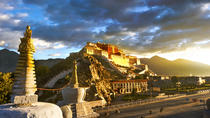
Potala Palace is the highest ancient palace in the world, reaching 12,360 feet (reaching 3,76 m) at the topmost point. Perched on the "Red Hill" in Lhasa in the Tibet Autonomous Region, the palace was the chief residence of His Holiness the Dalai Lama until the 14th Dalai Lama fled to India during the 1959 Tibetan uprising. Now a museum and a UNESCO World Heritage site, the site is actually made up of two parts: the Red Palace sits in the center, and the White Palace consists of the two wings that surround it …
» Sanxingdui Museum
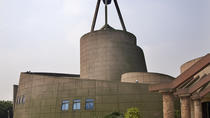
When a Sichuan peasant in 1929 unearthed a piece of jade while digging ditches in a field, he set in motion a chain of events which would lead to the largest discovery of Shu relics known to modern China. Located 25 miles (40.2 kilometers) north of the city of Chengdu, the Sanxingdui (Three Star Piles) Archeological Site covers an area of nearly 5 square miles (12.9 square kilometers) and has yielded thousands of cultural Shu relics which are now on display at the Sanxingdui Museum …
» Sera Monastery
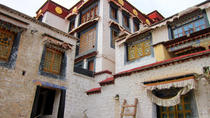
Known as the home of the "debating monks," Sera Monastery was built on a hillside in the northern part of Lhasa in 1419. One of the three most important monasteries in Lhasa, it is dedicated to the Gelugpa, or Yellow Hat, Sect of Tibetan Buddhism and is a university monastery. Visitors flock here to see the debates. a tradition young monks take part in as part of their training. In a series of debates, the senior monks drill the younger ones on various doctrines of Tibetan Buddhism and the teachings of Buddha …
» Shufeng Yayun Teahouse
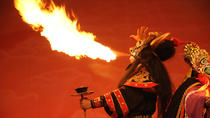
Located in the Chengdu Culture Park, the Shufeng YaYun Teahouse was once a gathering place for famous Sichuan operatic actors. Now, it is one of the hot spots for visitors to Chengdu and holds the China Sichuan Opera Unique Skills Performance each evening. This helps preserve and share traditional Sichuan arts while providing a glimpse into the past as one of the most popular Sichuan Opera theaters in the area. Don’t be misled by the term "opera" in relation to the performance that takes place here …
» Song Xian Qiao Market

Song Xian Qiao Antique City is the country's second-largest antiques market and an excellent place to shop for souvenirs. With more than 500 separate stalls selling everything from exquisite watercolor paintings to fake Buddha statues and everything in between, Song Xian Oiao market is a treasure trove for shoppers and people-watchers alike. The market stretches over five acres and houses between 500 to 800 stalls at any given time. For the most established vendors …
» Wenshu Temple
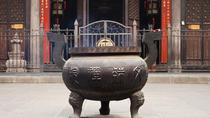
Located in the northern reaches of Chengdu, Wenshu Temple is often regarded as the best preserved Buddhist temple in the entire city. Originally known as Xinxiang Temple, the Buddhist center was later renamed Wenshu after a 17th century monk who famously inhabited the monastery grounds. The temple features a newly built 11-story iron pagoda which, at 72 feet (22 meters) in height, is the largest of its kind in all of China. This “Peace Pagoda of a Thousand Buddhas” is rung with yellow bells which melodically chime in the daytime breeze …
» Wuyou Temple
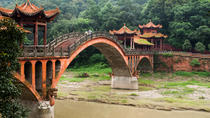
After visiting the Leshan Grand Buddha, make your way to Wuyou Temple on Wuyou Mountain. Traverse the picturesque Haoshang Bridge, a shortcut to the temple over the river, and make the climb up the steps to the Wuyou Temple. Built in the Tang Dynasty, it consists of seven Buddhist palaces and is surrounded by lush trees. Featuring an ancient courtyard on the outside with various statues of the Buddhist pantheon inside, this well-preserved temple is a gem …
» Yamdrok Lake

Located about 62 miles (100 km) to the southwest of Lhasa, Yamdrok Lake is the largest lake in southern Tibet and one of the country’s three sacred bodies of water. More than 45 miles (72 km) long with depths of up to 197 feet (60 m), this freshwater lake is a beautiful jade green color; the mirror-like surface reflects the clouds. Surrounded by snow-capped mountains, it’s also a place of pilgrimage for the Tibetan people and is said to be the life-spirit of the Tibetan nation …
» Zhaojue Temple
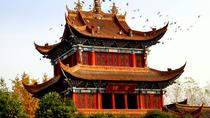
Considered one of the most important Zen Buddhist temples in western Sichuan, Zhaojue Temple dates back to the 600s, though little remains of the original architecture. While few traces of the original buildings remain, Zhaojue Temple has made a great contribution to the culture exchange between China and foreign countries. According to Zen history, in the Kamakura period, there were 24 Zen sects in the whole country; 20 of them were from Chengdu’s Zhaojue Temple Yuanwu Keqin sect …
« CHINA • DISCOVER CHINA • Chengdu


